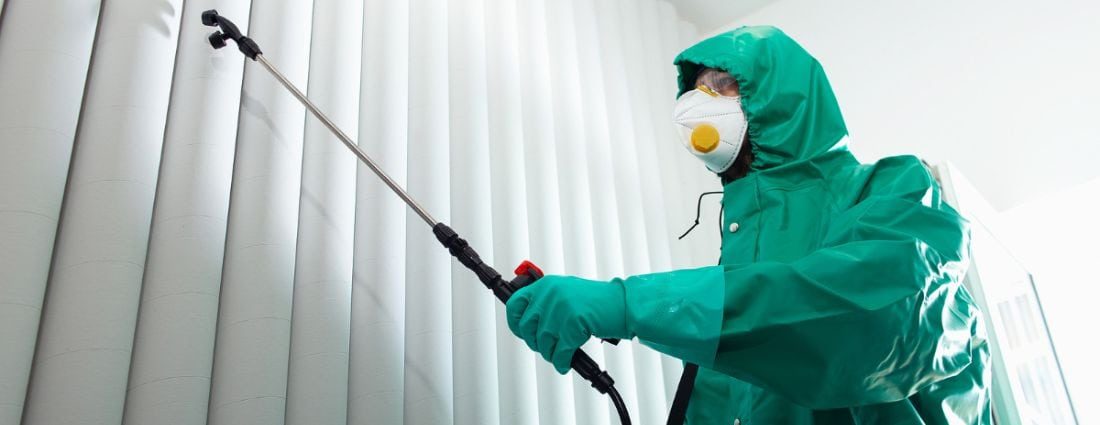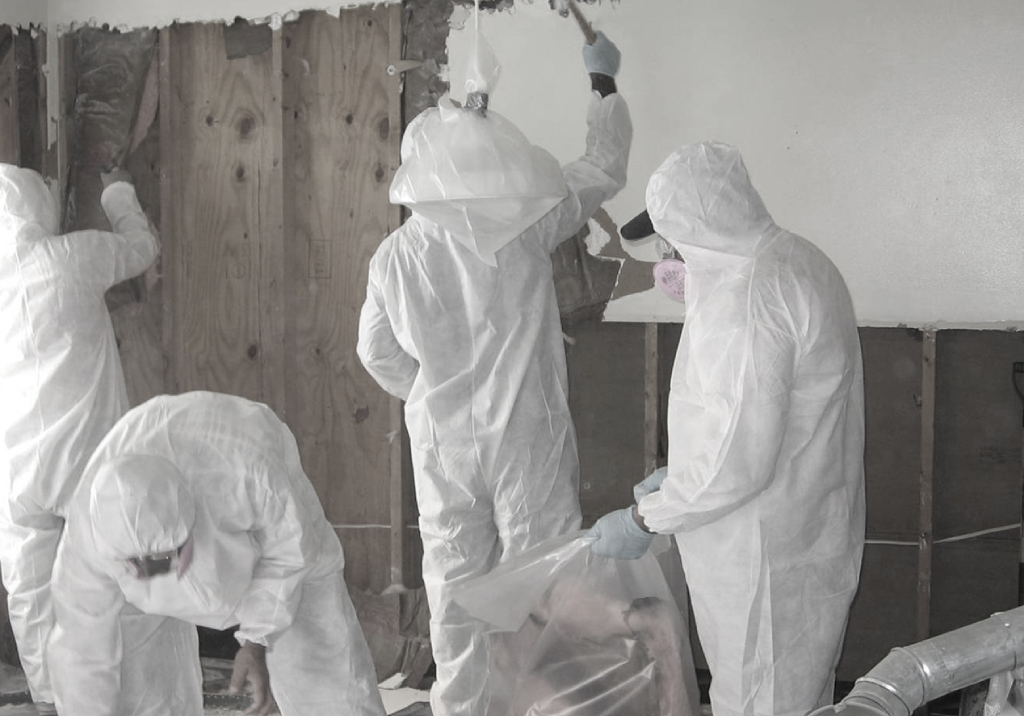Mold Remediation Providers: Shielding Your Residential Property from Mold And Mildew Damage
Mold Remediation Providers: Shielding Your Residential Property from Mold And Mildew Damage
Blog Article
Professional Biohazard Cleansing and Purification for Blood, Bodily Fluids, and Hazardous Products
In the realm of biohazard cleaning and decontamination for blood, physical liquids, and harmful materials, accuracy and knowledge are paramount. The possible health and wellness risks related to direct exposure to biohazards highlight the critical demand for careful handling and extensive cleanup. Specialized training outfits experts with the knowledge and skills necessary to resolve these dangerous situations successfully. However, it is not just about tidying up; the significance of using appropriate decontamination methods can not be overemphasized. As we browse the elaborate landscape of biohazard clean-up, recognizing the nuances of regulations, compliance, and the specific devices at play comes to be imperative in making certain a risk-free and detailed decontamination procedure.
Health Risks of Biohazard Exposure
Direct exposure to biohazards presents substantial health and wellness threats that can cause severe consequences for communities and individuals alike. Biohazards encompass a variety of biological compounds, including blood, bodily fluids, mold, germs, viruses, and other potentially infectious materials. When people enter into call with these biohazards, whether via crashes, inappropriate handling, or ecological exposure, they deal with the risk of contracting serious ailments or conditions.
Among the main wellness threats connected with biohazard direct exposure is the transmission of contagious illness. Bloodborne pathogens such as HIV, hepatitis B and C, and different bacteria can be existing in biohazardous products, presenting a direct threat to human health. Breathing in airborne biohazards like mold spores or entering call with contaminated surfaces can additionally cause respiratory issues, allergic reactions, and other adverse wellness results.
In addition, biohazard direct exposure can have long-lasting health effects, with some illness manifesting years after the first get in touch with (Blood Cleanup). For that reason, it is crucial to focus on appropriate biohazard cleaning and purification to reduce these wellness dangers and ensure the security of individuals and areas

Specialized Training for Biohazard Clean-up
When it involves handling biohazard clean-up successfully and safely, specialized training plays a basic duty in ensuring proper decontamination procedures are complied with. Biohazard clean-up calls for details knowledge and skills to efficiently reduce dangers related to bloodborne pathogens, physical fluids, and harmful products. Specialists educated in biohazard cleaning undertake extensive instruction on how to safely manage, get rid of, and get rid of biohazardous materials to stop contamination and direct exposure.
Specialized training for biohazard clean-up covers a variety of crucial subjects, consisting of appropriate individual protective devices (PPE) usage, bloodborne pathogen awareness, purification strategies, and contaminated materials disposal methods. People trained in biohazard cleanup are geared up with the required know-how to examine contamination degrees, determine potential hazards, and carry out proper clean-up procedures in conformity with governing requirements.
Continuous training and education and learning are paramount in the area of biohazard clean-up to stay upgraded on the most current decontamination technologies, safety and security procedures, and policies. By purchasing specialized training, biohazard cleaning experts can effectively react to emergency cleanup situations and guard both public wellness and the environment.
Relevance of Appropriate Decontamination Strategies
Utilizing correct decontamination strategies is vital in biohazard cleanup you could check here to effectively minimize and remove dangerous products health threats. Effective purification not only makes certain the removal of noticeable traces of blood, bodily fluids, and various other biohazards but likewise targets invisible microorganisms that might position severe health dangers otherwise correctly removed. By following strict purification protocols, trained specialists can considerably minimize the threat of exposure to harmful microbes, viruses, and germs that can lead to infections or illness.
Proper decontamination methods entail making use of specific tools and disinfectants that are particularly designed to reduce the effects of biohazards successfully. Extensive cleansing and sanitation of contaminated areas are vital to stop the spread of virus and guarantee a risk-free setting for residents. Furthermore, the proper disposal of biohazardous waste complying with purification treatments is vital in stopping contamination of various other surface areas or people.

Tools and Devices for Safe Clean-up
The appropriate tools and devices play a crucial role in ensuring the Going Here safe and effective clean-up of biohazardous products. When handling blood, bodily liquids, or dangerous products, biohazard cleansing experts rely upon specialized equipment to minimize direct exposure risks and extensively decontaminate the damaged area. Individual protective equipment (PPE) such as gloves, masks, goggles, and coveralls are necessary to safeguard against straight contact with possibly infectious products. Additionally, biohazard cleaning packages having disinfectants, absorptive materials, and biohazard bags are utilized to securely get rid of and include of infected items. Blood Cleanup.
Advanced cleansing tools like hospital-grade anti-bacterials, HEPA-filtered vacuums, and misting machines are utilized to disinfect surfaces and eliminate biohazards properly. Specialized equipment such as sharps containers and biohazard waste disposal bins are used to securely take care of sharp items and biohazardous waste products. By making use of the right devices and devices, biohazard cleansing professionals can make sure a detailed cleaning process that prioritizes security and decreases health risks for both workers and occupants of the afflicted area.
Laws and Conformity in Biohazard Cleaning
Appropriate adherence to policies and compliance standards is vital in biohazard cleansing to make sure the security of both workers and the atmosphere. Government companies such as OSHA (Occupational Safety and Health And Wellness Administration) and the EPA (Environmental Protection Agency) have developed details guidelines for biohazard clean-up treatments to decrease wellness risks and ecological contamination. These laws cover a variety of aspects consisting of the handling, transport, and disposal of biohazardous materials, in addition to the essential training and safety equipment required for employees entailed useful link in the cleaning procedure.
Biohazard cleansing firms have to stay updated with these policies to ensure that their procedures fulfill the needed safety criteria. Failing to abide by these policies can lead to serious consequences, consisting of fines, lawsuit, and endangering the wellness of people and the atmosphere. By following rigid policies and conformity steps, biohazard cleansing companies can effectively alleviate risks and make sure a secure and extensive cleaning process for all events involved.
Final Thought
In conclusion, biohazard cleaning and purification require specific training, correct techniques, and adherence to regulations. Exposure to blood, physical liquids, and dangerous products poses considerable wellness risks, making it important to make use of the best devices and devices for safe clean-up. By adhering to strict procedures and standards, specialists can effectively reduce the risks related to biohazard direct exposure and guarantee the safety and security of both themselves and others.
As we navigate the complex landscape of biohazard cleaning, recognizing the subtleties of regulations, compliance, and the specialized tools at play ends up being essential in ensuring a detailed and secure decontamination process. (Blood Cleanup)
When it comes to dealing with biohazard clean-up efficiently and securely, specialized training plays a basic duty in making certain correct purification treatments are complied with.Using appropriate decontamination techniques is essential in biohazard cleanup to properly eliminate dangerous materials and minimize health and wellness risks. Additionally, biohazard cleansing packages consisting of disinfectants, absorbent products, and biohazard bags are utilized to securely consist of and get rid of of contaminated things.
Government agencies such as OSHA (Occupational Safety And Security and Health And Wellness Administration) and the EPA (Environmental Protection Firm) have developed certain guidelines for biohazard cleaning treatments to lessen health threats and environmental contamination.
Report this page